The Lowdown
Ultimately, we had to step away and set the Engino London Eye aside, but I’m hopeful we can tackle this again with more success in the future, maybe over the summer when my son is a bit older. For what it costs, you’ll want to make sure everyone involved in this project is committed to it!
Overall
Pros
Individual pieces have good build quality
3D instructions are really well designed
The idea is good, and in the right hands, it could be a fun project
Cons
- Instructions were terrible at showing the bigger picture
- Paper instructions or (at the very least) a printed key that identified each completed section during the build would have been very helpful
- More difficult than a 9+ rating in my view
- Bagging it by steps instead of by random parts would have made it easier to build and organize
I love building things. It’s insanely fun to open up a kit of random parts and make them into something amazing. Luckily, my son shares this interest, so we were both super excited to check out the Engino London Eye kit. But did we tackle more than we could handle? Read on to find out!
This is one of those reviews where there’s the good, the bad, and the ugly, and while I do feel the good overall outweighs the bad and the ugly, this was a tough project.
I am pretty sure my son learned some new “please, don’t tell your other parent or repeat this outside my house” phrases while we built this. I’m only a little ashamed. But since I want to end things on a good note, I’m going to start this review with the frustrating parts and end it with what I liked.
So if you want to know why this might be a good buy, feel free to jump to the bottom, but if you’d like to learn why a box of plastic parts nearly made my grown self cry, feel free to keep reading.
Why I Found the Engino London Eye Kit to Be Frustrating
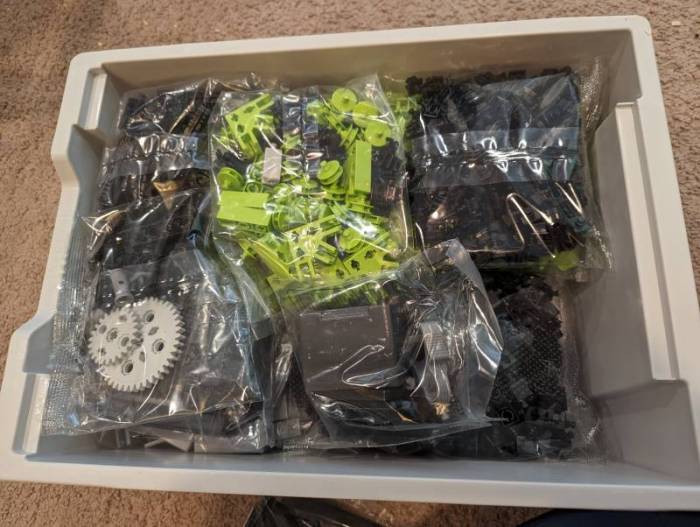
Engino utilizes a system that a lot of companies use these days where they put the entire instruction set and manual online. I get it because it saves paper and allows for the ability to look at the project from multiple angles, zoom in and out, and watch an animation of the steps.
They divided the entire project into 27 sections, with each section having between 50-90 individual steps. In the end, you have a pile of 26 random-looking pieces, and section 27 walks you through how to connect them all together.
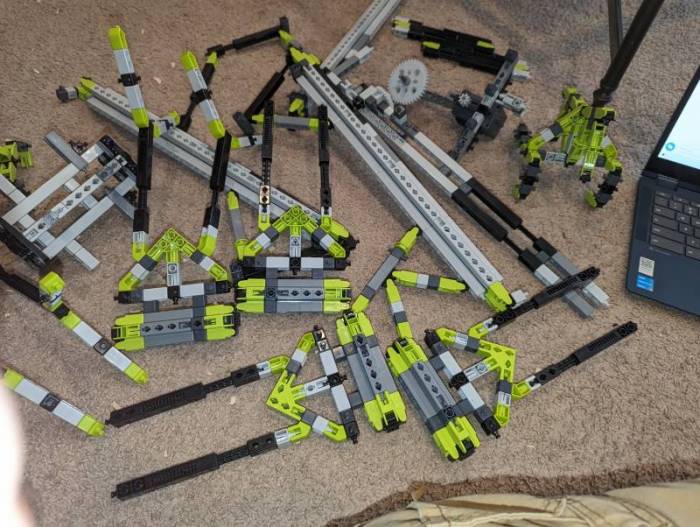
I legitimately forgot what some of these parts were for by the time I finished.
The sheer volume of steps is what makes the Engino London Eye kit’s online-only manual so difficult.
By the time I had made it through all 26 sections, I had completed well over 1,000 individual steps and connected hundreds of pieces together.
None of it felt like anything clear, and I started to sympathize with archaeologists in the 1800s who found half a rib bone and had to extrapolate what a Tyrannosaurus Rex looked like.
If you’ve ever wondered how they could have put together skeletons wrong, just try to build the Engino London Eye, and you’ll start to understand.
I knew intellectually that various pieces were going to come together to form a wheel and a base, but they honestly felt like a jumbled pile.

Honestly, what makes this worse is that there are two ways I think Engino could have addressed this.
1. They could have included a graphic with each section highlighting that portion on a photo of the finished model.
It would have felt so much less disorienting to know, “ok, so this is going to attach with this part up because it’s this portion of the wheel assembly.”
Trying to build without any visualization of how it all fit together was really tough.
2. Likewise, I think the other option could have been to include a sheet that showed the completed sections individually.
Sure, I might have to download an app or go to a website to see how the section was made, but having a paper reference regarding which part was A3 versus C2 would just make it that much simpler once the assembly portion begins.
Again, it all comes down to giving the buyer some way to let them visualize how each of the parts becomes the whole.
It didn’t help that the Engino London Eye kit bags were mixed.
If they had been broken down as A0, A1, etc., it would have been far easier to sort through it all, but instead, it was just a giant mess of plastic parts in the same bag.
That’s fine-ish; a lot of companies just send mixed bags, and I get that it’s easier to send a large mixed bag of universal parts rather than breaking down every kit by section.
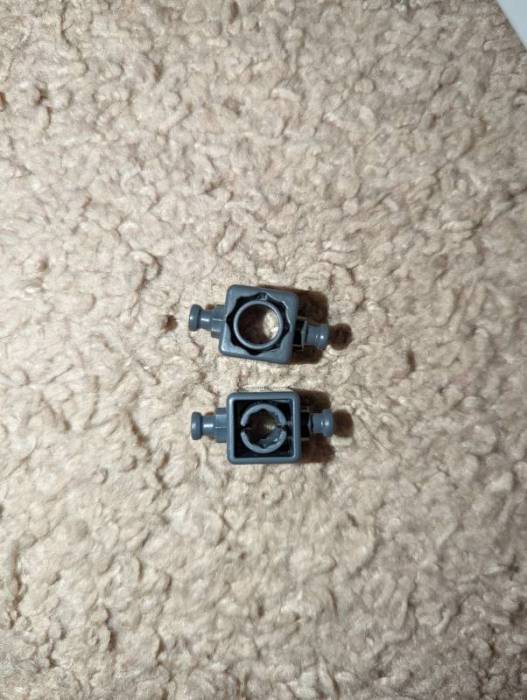
One of these had hundreds. The other had five. WHY ARE THEY THE SAME COLOR?!
But the frustratingly unforgivable thing is how similar the parts are! The picture above is two gray pieces with plugs on either end.
One of these parts comes with 266 identical pieces; the other is one of 5.
For the record, they look exactly the same unless you take the time to flip over each and every one of these similar parts to verify the difference. Using a different color would have made this so much less stressful!
Here’s What Was Good About the Engino London Eye Kit

I did promise the good parts, too, so here they are.
Engino’s use of 3D instructions is really well done, and I did appreciate being able to rotate my view so I could see it from multiple angles. I also was impressed with the hardware.
None of the pieces were difficult to fit together, but they all stayed together well. Any structural issues were from my own mistakes, not the kit itself. I really appreciated how easy it was to pop the parts together, as well as the little plastic tweezers to separate parts that were attached incorrectly.
95% of my frustration with this kit was with the instructions and packaging, but the actual hardware itself was great.
There’s also a motor that turns the finished product, and like everything else, it is well-built and takes regular AAA batteries. Overall, I wouldn’t hesitate to build something else from this line if the instructions portion was a bit clearer.
Engino says this is for 9+, but I would argue that it’s definitely more of a teenage+ kit if you’re doing it alone.
My 9-year-old loves building things, and he was really into the kit … for the first 5 sections or so.
It was a big ask to get him to focus for the several hours it took to finish the kit. In the interest of full disclosure, it devolved into chaos when one of us (it’s legitimately unclear which, we were both pretty exhausted at that point) knocked into the half-built structure. We lost a huge chunk of work.
So here’s footage and pictures from Engino of how it was supposed to look because we failed miserably.
Honestly, I think this was 75% user error and about 25% Engino.
We didn’t come into this prepared for success because I vastly underestimated how difficult the project would be, which didn’t set us up well to return to it after a long break without causing major, major issues with digging up key pieces and remembering how things were supposed to have looked before they were set aside.
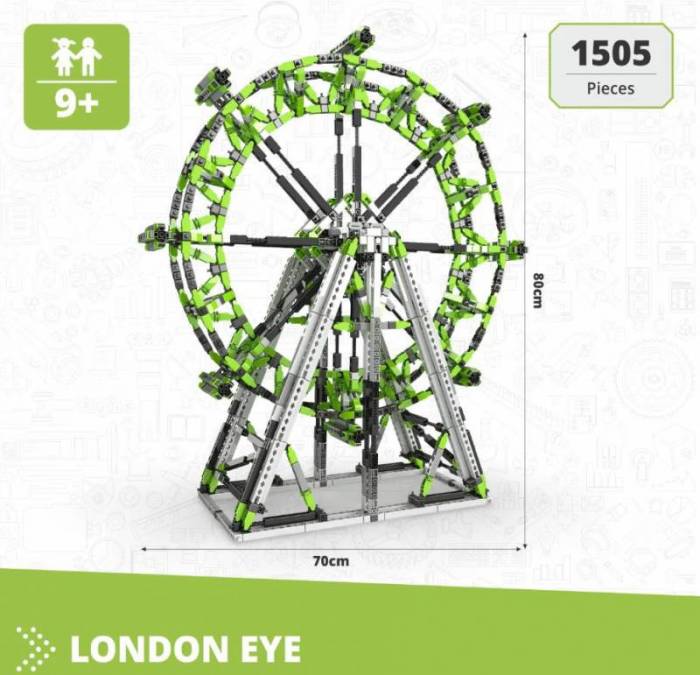
Should you buy the Engino London Eye Kit?
I would say that if you had an adult and an older kid working on this, it could be done easily.
A very determined adult with plenty of work space to spread out could probably do this with no problem; it’s just a lot for an adolescent to do on their own, and the user mistakes I made just kept compounding our issues.
Ultimately, we had to step away and set the Engino London Eye aside, but I’m hopeful we can tackle this again with more success in the future, maybe over the summer when my son is a bit older. For what it costs, you’ll want to make sure everyone involved in this project is committed to it!
The Engino London Eye Kit sells for $239.99; it is available directly from the manufacturer.
Source: Manufacturer supplied review sample
What I liked: Individual pieces have good build quality; 3D instructions are really well designed; The idea is good, and in the right hands, it could be a fun project
What Needs Improvement: Instructions were terrible at showing the bigger picture; Paper instructions or (at the very least) a printed key that identified each completed section during the build would have been very helpful; More difficult than a 9+ rating in my view; Bagging it by steps instead of by random parts would have made it easier to build and organize

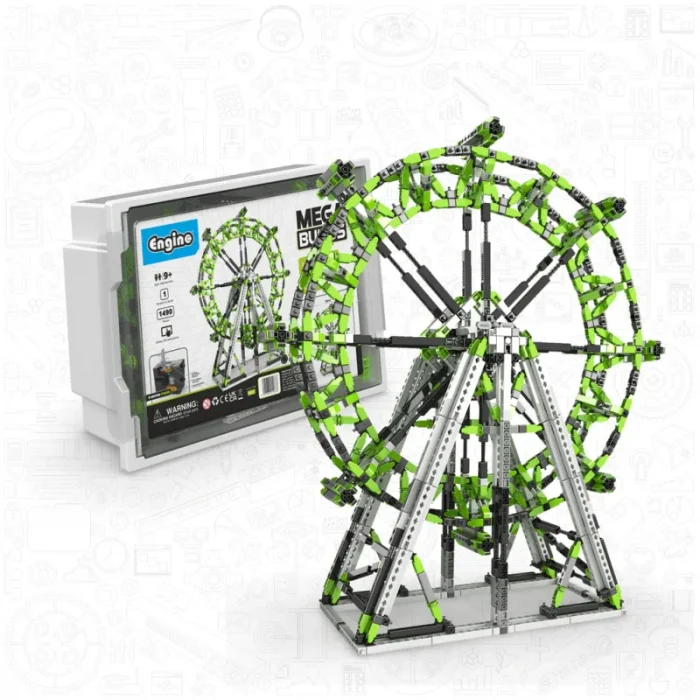
Really appreciate this review – especially noting the challenge with the instructions and overall difficulty rating.
Thanks for the review! It’s very helpful to learn about the issues with this kit.